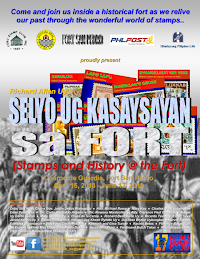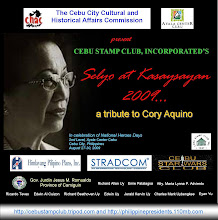Today in Philippine History (Philatelic Edition Series 2):
May 13, 1852
Doña Gliceria Legaspi Marella de Villavicencio (May 13, 1852- September 28, 1929), a heroine of the Philippine Revolution, was born in Taal, Batangas.
Her parents Vicente Marella and Gertrudis Legaspi belong to wealthy families.
In October 1871, she married Eulalio Villavicencio, a rich ship owner.
They gave 18,000 to Dr. Jose P. Rizal in 1892 and helped in the distribution of propaganda materials such as La Solidaridad.
A big portion of their wealth was given to support the Philippine Revolution.
Their house, which was Eulalio’s wedding gift to Gliceria, became a place of refuge and the secret meeting place of Katipunan leaders which included Andres Bonifacio, General Miguel Malvar, and General Eleuterio Marasigan.
The Spanish authorities soon learned about the couple’s revolutionary activities and ordered the Guardia Civil to conduct searches in their house.
In one of the searches, Eulalio was arrested and charged with sedition and inciting to rebellion.
Gliceria or Aling Eriang went to Manila to plead for her husband’s release.
The authorities agreed to release Eulalio in exchange for secret informations regarding the Katipunan but Gliceria turned down the offer.
In February 1898, her husband died, three months after he was released from prison.
Aling Eriang founded Batallon Maluya, and provided food, clothing and ammunition as well as financial and moral support to the troops.
She donated her ship, the SS Bulusan to General Emilio Aguinaldo, which became the first warship of the Revolution.
It transported troops, weapons, ammunitions and food supplies in the Bicol and Visayas areas.
During the Proclamation of Philippine Independence on June 12, 1898, she was given the title “Godmother of the Revolutionary Forces.”
Doña Gliceria Marella de Villavicencio died on September 28, 1929.
Design, concept, stamps and research: Richard Allan B. Uy) All rights reserved
Photo credit: Nolisoli.ph


































































